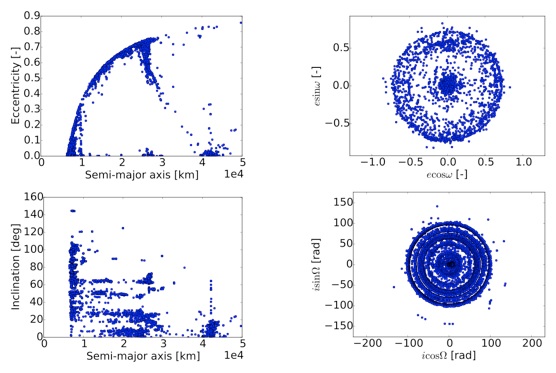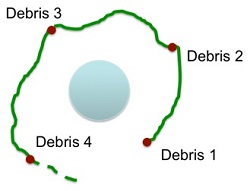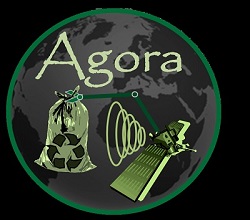My Stardust world
Originally posted on the Stardust website
The Stardust network affords me the opportunity to pursue challenging, innovative, and meaningful research, whilst simultaneously providing me with the chance to build a professional network and develop a variety of skills that are essential to early-stage researchers. Working at Dinamica Srl, I have been involved in exciting, new research on space debris risk mitigation.

Figure 1: Distribution of the space debris population
Space debris, commonly referred to as space junk, is a growing problem that requires in-depth research to develop means to mitigate risks posed to valuable space assets, and to safeguard life on Earth. Figure 1 illustrates the distribution of space debris in space, in terms of the classical (Keplerian) orbital elements, highlighting the fact that the population is large, clustered and varied.
Across the world, efforts are underway to develop the necessary understanding and technologies to tackle this threat. These efforts include:
1. improvement in our ability to track and detect the risk of collisions on-orbit and threat of uncontrolled, re-entering debris objects to populated areas on the ground;
2. development of technologies to actively mitigate the risks posed by existing space debris objects (commonly termed Active Debris Removal (ADR));
3. development of technologies to fly on future missions, to ensure minimal risk of adding to the existing space debris population, and mission planning to ensure that parking objects at End-of-Life in graveyard orbits or controlled re-entry is possible in a safe and reliable manner.
My research within the Stardust network focuses on the development of ADR mission concepts to tackle some of the greatest threats within the debris population. In summary, I am involved in two primary projects within Stardust, to address different aspects of ADR mission development:
1. Development of a [tool](https://github.com/kartikkumar/d2d) to assess the possibility of efficiently targeting multiple debris objects in a single ADR mission. Within the scope of this project, I am developing a new solution technique that incorporates perturbations that affect Earth-orbiting satellites (atmospheric drag, solar radiation pressure, irregular gravity field of the Earth, etc.). Specifically, I have developed a new solver called [Atom](https://github.com/kartikkumar/atom) that is a counterpart for the traditional [Lambert solver](https://en.wikipedia.org/wiki/Lambert's_problem), typically used to plan multi-target space missions, as illustrated schematically in Figure 2 (e.g., asteroid grand tours, Cassini-like tours of planetary systems, etc.).

Figure 2: A schematic representation of a multi-target trajectory for an ADR mission concept
2. Development of a mission concept to remove hazardous, expended rocket bodies. One of the main classes of space debris objects is expended upper stages of launchers. I am currently leading the development of a mission concept called Agora (Active Grabbing and Orbital Removal of Ariane; see Figure 3 for mission patch) to target Ariane rocket bodies for removal. As part of this project, we are employing a novel technique to detumble an Ariane rocket body and to capture it with a robotic manipulator. My main technical contribution to the project is to develop the Guidance, Navigation & Control (GNC) architecture, to ensure that Agora can approach and engage a target rocket body in a safe and controlled manner.

Figure 3: Agora, an ADR mission concept to remove hazardous Ariane rocket bodies
I would like to see this research play a role in the formulation of a real ADR mission by the end of the decade. The European Space Agency (ESA) has shown the intent to tackle the threat posed by large space debris objects through the Clean Space initiative. I firmly believe that research on space debris risk mitigation must not remain an academic exercise, but rather should lay the foundation for mission development in the near future. As a personal goal, I would like to continue this line of research and look forward to future opportunities to help tackle the space debris problem.